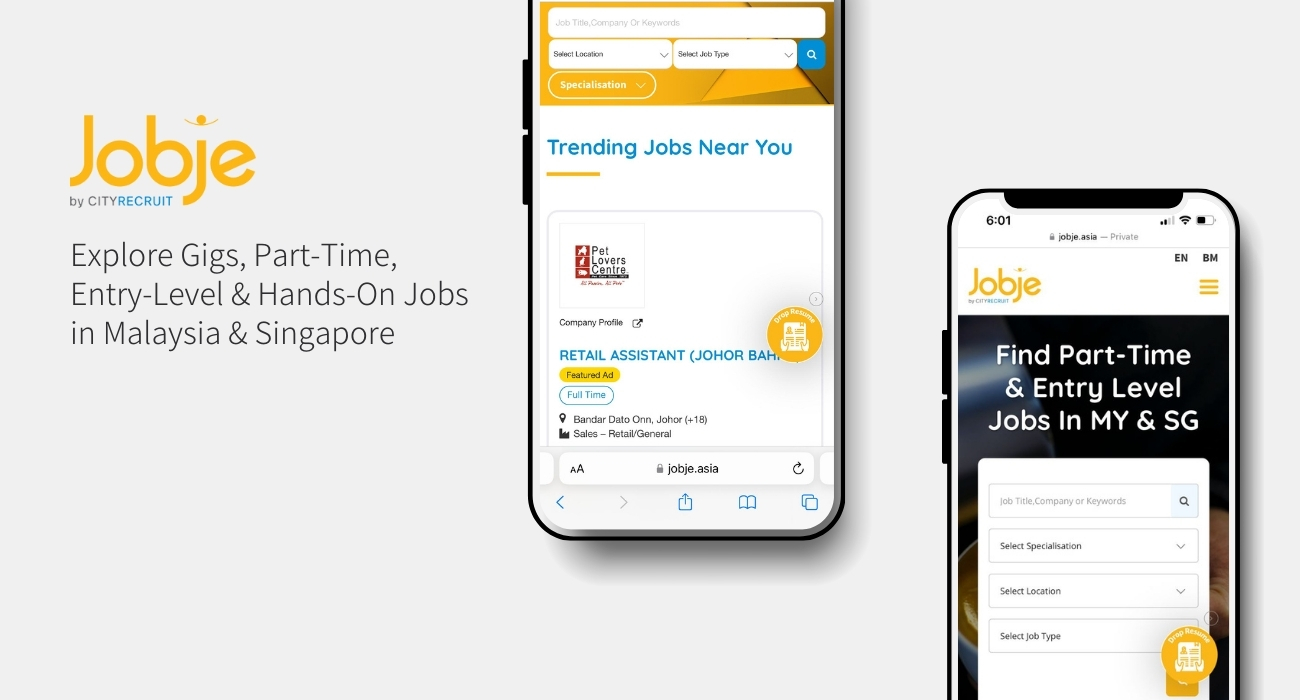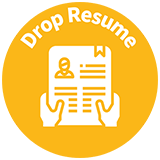Have you ever felt like you chose the wrong career path? People often say, “Do what you love, and love what you do,” but what if you’re stuck in a job that’s doing nothing but draining the life out of you? That’s a pretty solid sign it might be time for a career switch.
Of course, making that leap is easier said than done, whether you’re just starting out or already a few years into your career. The thought of starting from the beginning will definitely send a shiver down your spine.
From financial stability to skill transferability, a decision this big isn’t something to take lightly.
But don’t worry, learning how to switch careers the right way doesn’t have to mean throwing away all the progress you’ve made. With the right mindset, strategy, and preparation, you can pivot into something new while still building on your existing experience.
In this article, we’ll explore the common fears job-switchers face and share practical tips to help you transition smoothly into your exciting next chapter.
Before You Resign and Regret, Know Why You Wanna Switch

Before you rush into polishing your resume or applying for new jobs, you need to get crystal clear on why you want to switch career directions.
A vague feeling of “I hate my job” won’t cut it when you’re facing the reality of changing industries.
You can ask yourself these questions to better understand the why in your decision:
- Is it the nature of the work itself that’s draining you?
- Is it the company culture or leadership style that doesn’t fit?
- Do you feel stuck because there’s no growth or challenge anymore?
- Or is it that your personal values and priorities have shifted over time?
The clearer you are on your reasons, the easier it will be to identify the right direction.
Fresh out of uni(versity)? We have the perfect guide for first-time job seekers.
Think Switch Career Means Reset? Not Really Lah

One of the biggest fears people have when they switch career fields is that they’ll have to start at the bottom again. That’s not always true.
Yes, you may need to pick up new skills or accept a short-term pay adjustment, but your past experience isn’t wasted at all; it can be an asset to your new role.
Consider the transferable skills that you have picked up in all your years of employment.
- Communication: The ability to present ideas clearly is gold in any role.
- Project management: Deadlines and deliverables exist in every industry.
- Problem-solving: Employers value people who can figure things out under pressure.
- Leadership: Even if your new job is in a different sector, leading people is universal.
When you frame your previous achievements in a way that aligns with your new path, employers will see you as someone bringing a unique mix of expertise, not a newbie starting from scratch.
Smooth Career Switch in 6 Simple Steps
Switching career paths doesn’t happen overnight, but it also doesn’t have to drag on for years. That’s why it’s important to learn how to switch careers step by step.
There are some simple steps that you can follow to make the entire process smoother and more manageable.
1. Research on your Target Industry
Learn about the job market, salary ranges, growth potential, and industry leaders.
How: Follow experts on LinkedIn, read industry blogs, and join relevant communities to build confidence for networking and interviews.
Example: Attend free webinars by industry associations, read Glassdoor salary reports, and join niche Facebook or LinkedIn groups.
2. Identify Skill Gaps and Fill Them Strategically
Compare your skills to job descriptions in your desired field.
How: Address recurring skills or certifications through short courses, workshops, or volunteering to show proactive learning.
Example: Take a Google Analytics course for marketing roles, volunteer to manage events for a charity, or complete a project on Coursera or Udemy.
3. Leverage Your Network
Tap into your personal and professional connections.
How: Contact former colleagues, mentors, and industry contacts with a clear idea of what you’re seeking. Many opportunities come from people, not job boards.
Example: Message a former teammate on LinkedIn for coffee, attend alumni networking nights, or ask a mentor to introduce you to someone in your target industry.
4. Use Recruitment Portals Strategically
Search for relevant roles and understand market demand.
How: Set alerts on multiple platforms, tailor your applications, and study job postings to refine your resume and skill development plan.
Example: Create an account on various recruitment portals, set notifications as a priority, apply with tailored cover letters, and analyse recurring skill requirements in postings.
5. Reframe Your Resume and Professional Social Media Accounts
Present yourself as the ideal candidate for your new direction.
How: Highlight transferable skills and relevant achievements, and craft a headline that reflects your pivot without implying you’re starting over.
Example: Change “Account Manager at X Company” to “Customer Success Specialist | Building Strong Client Relationships,” remove unrelated old jobs, and showcase relevant volunteer work.
Need tips on updating your resume? Read our guide How to Write a Resume That Gets Hired: Malaysia Fresh Grad Guide.
6. Start Small if You Have To
Ease into your new field gradually.
How: Take on side projects, freelance work, or part-time roles to build a portfolio, gain experience, and maintain income while transitioning.
Example: Offer freelance design work on recruitment portals, take weekend photography gigs, or assist a friend’s startup with social media on the side.
Switch Career Also Got Stress One — Here’s How to Chill
Switching career paths isn’t just about logistics; it’s an emotional journey. Doubt will creep in, and there will be days you’ll question whether you made the right call. You might even miss parts of your old job, like:
- Familiar routines
- Work friendships
- The comfort of knowing exactly what to do
That’s normal. Change feels uncomfortable because it’s unfamiliar, not because it’s wrong. Our minds naturally prefer certainty, so stepping into a new environment can feel unsettling.
But remember: discomfort often means growth. It’s a sign you’re stretching beyond old limits.
To stay grounded during this transition:
- Build a support circle of people who encourage you and celebrate your wins
- Filter out negativity by limiting time with those who project their fears onto you
- Give yourself grace as you’re not expected to have everything figured out from day one.
Treat this as a learning curve rather than a pass-or-fail test. With patience and self-belief, you’ll soon find your footing in your new chapter.
Stay Financially Prepared: Money Must Ready First, Bro
Switching career fields isn’t just a mental and professional shift; it’s also a financial one. Without proper planning, the excitement of a new path can quickly be overshadowed by money stress.
By preparing your finances in advance, you’ll give yourself the breathing room to make decisions based on what’s best for your future, not just what pays the bills right now.
Tips on Being Financially Prepared
1. Anticipate Financial Adjustments
Why?: A career switch may involve income gaps, a temporary pay cut, or upfront costs like courses or equipment.
What to Do: Review expected expenses for your transition and plan for potential changes in income.
2. Build an Emergency Fund
Why?: Having 3–6 months of essential living costs saved reduces stress and prevents rushed decisions.
What to Do: Track your expenses, cut back temporarily, and set a savings target to create a safety net.
3. Create Extra Income Streams
Why?: Side earnings can increase savings and let you test your new field before committing.
What to Do: Offer freelance work, consulting, tutoring, or monetise existing skills online.
Jobje Pro Tip: Browse part-time and freelance gigs on JobJe to ease your transition.
4. Make Thoughtful Decisions
Why?: Financial readiness allows you to choose roles that truly align with your goals instead of accepting out of urgency.
What to Do: Delay big purchases, avoid new debt, and focus on securing the right long-term opportunity.
Start Kecil-Kecil, Dream Besar-Besar
When you switch career paths, it doesn’t always mean making a complete 180. Sometimes a smaller pivot can give you fresh energy without losing the progress you’ve already made.
Not every career switch needs a dramatic exit. You can start by:
- Exploring internal transfers to other departments
- Involve in cross-functional projects to build a network
- Taking temporary assignments that expose you to new skills
Why this works:
- Builds credibility in a new area
- Lets you grow while keeping the stability of your current role
Even if the shift feels minor at first, keep a long-term vision in mind. Today’s small step could be the foundation for tomorrow’s big leap.
Your Career Wingman – Always Here to Help

Switching careers is never a small decision, but it doesn’t have to mean throwing away years of hard work. With clarity on your reasons, a strategy that plays to your strengths, and the willingness to keep learning, you can step into a new role with confidence.
Every skill you have built so far has value. Your next chapter is not about starting from zero. It is about taking everything you have learned, adding new experiences, and shaping a career that feels fulfilling and exciting.
If you’re ready to switch career paths, JobJe has your back.
As a growing job platform in Malaysia, we share practical advice for job seekers and connect you with employers to make job hunting easier, faster, and more meaningful.
Your next opportunity awaits. Find your next job on Jobje or connect with us on Whatsapp.
Frequently Asked Questions
1. How do I know if it’s the right time to switch careers?
If you consistently feel unfulfilled, dread going to work, or see no long-term growth in your current role, it might be time to explore other options. The “right” time is when you’ve done your research, have some financial cushion, and are mentally ready for the change.
2. Do I have to start from the bottom again?
Not necessarily. Many skills are transferable across industries. The key is learning how to position them so employers can see their relevance in the new field. You might take a lateral move or even a slight step down, but it doesn’t mean starting over entirely.
3. How long does a successful career switch usually take?
It varies. Some people transition within months, while others take a year or more to do so. Factors like skill gaps, networking efforts, and market demand can influence the timeline.
4. What if I switch careers and regret it?
View it as a learning experience rather than a failure. Skills gained from your new role can still be applied elsewhere, and you can pivot again if needed. Career paths today are rarely linear.
5. Do employers hire people from completely different backgrounds?
Yes, especially if you can show enthusiasm, relevant transferable skills, and proof of effort—such as certifications, projects, or volunteer work in the new field. Many industries value fresh perspectives.




